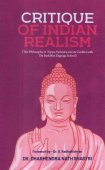External World: 2 definitions
Introduction:
External World means something in Buddhism, Pali, Hinduism, Sanskrit. If you want to know the exact meaning, history, etymology or English translation of this term then check out the descriptions on this page. Add your comment or reference to a book if you want to contribute to this summary article.
In Hinduism
Yoga (school of philosophy)
Source: ORA: Amanaska (king of all yogas): A Critical Edition and Annotated Translation by Jason BirchThe External World is denoted by the Sanskrit term Bāhya, according to the Amanaska Yoga treatise dealing with meditation, absorption, yogic powers and liberation.—Accordingly, as Īśvara says to Vāmadeva: “[...] [Now], I will teach the practice of that, which produces absorption. [...] When [the Yogin] is freed from sense objects, knowledge of an external [world] does not exist. And when knowledge of an external [world] (bāhya-jñāna) has disappeared, then [the Yogin] becomes impartial to all things. [...]”.

Yoga is originally considered a branch of Hindu philosophy (astika), but both ancient and modern Yoga combine the physical, mental and spiritual. Yoga teaches various physical techniques also known as āsanas (postures), used for various purposes (eg., meditation, contemplation, relaxation).
In Buddhism
Tibetan Buddhism (Vajrayana or tantric Buddhism)
Source: archive.org: The Indian Buddhist IconographyExternal World.—In the eye of a Vajrayānist the external world has much the same significance as it appears in Yogācāra. The Tantras characterize the external world with its movable and immovable objects like a pot, picture, carriage, house, stone-house, mountains and the rest as reduced by reason to mere appearances, in the same way as magic and dream are considered to be appearances. Therefore, the Vajrayānists hold that external objects have no greater reality than magic, mirage, shadow or dream, and their reality cannot be proved by reason.

Tibetan Buddhism includes schools such as Nyingma, Kadampa, Kagyu and Gelug. Their primary canon of literature is divided in two broad categories: The Kangyur, which consists of Buddha’s words, and the Tengyur, which includes commentaries from various sources. Esotericism and tantra techniques (vajrayāna) are collected indepently.
See also (Relevant definitions)
Partial matches: External, World.
Full-text (+23): Pravrittipratyaya, Samvara, Vishayaparanmukha, Bahyagocara, Bahyajnana, Jnanendriya, Samvare, Pravrittivijnana, Vastuvivarta, Vishaya, Sakarajnanavada, Sarvasama, Pashupasha, Purananuru, Karmendriya, Vikshepashakti, Pratyahara, Bahis, Atindriya, Acca.
Relevant text
Search found 110 books and stories containing External World; (plurals include: External Worlds). You can also click to the full overview containing English textual excerpts. Below are direct links for the most relevant articles:
Brahma Sutras (Shankara Bhashya) (by Swami Vireshwarananda)
Chapter II, Section II, Adhikarana V < [Section II]
Chapter II, Section II, Adhikarana IV < [Section II]
Vivekachudamani (by Shankara)
The Tattvasangraha [with commentary] (by Ganganatha Jha)
Verse 2524 < [Chapter 24b - Arguments against the reliability of the Veda (the Revealed Word)]
Verse 3646 < [Chapter 26 - Examination of the ‘Person of Super-normal Vision’]
Verse 2981-2982 < [Chapter 25 - Examination of the Doctrine of ‘Self-sufficient Validity’]
A History of Indian Philosophy Volume 1 (by Surendranath Dasgupta)
Part 19 - Brief survey of the evolution of Buddhist Thought < [Chapter V - Buddhist Philosophy]
Part 2 - The philosophical situation (a review) < [Chapter X - The Śaṅkara School Of Vedānta]
Part 13 - Knowledge as Revelation < [Chapter VI - The Jaina Philosophy]
Chaitanya Bhagavata (by Bhumipati Dāsa)
Verse 2.11.26 < [Chapter 11 - The Characteristics of Nityānanda]
Verse 3.5.301 < [Chapter 5 - The Pastimes of Nityānanda]
Verse 3.5.237 < [Chapter 5 - The Pastimes of Nityānanda]
Vakyapadiya of Bhartrihari (by K. A. Subramania Iyer)
Verse 2.441 < [Book 2 - Vākya-kāṇḍa]
Verse 3.3.33 < [Book 3 - Pada-kāṇḍa (3): Sambandha-samuddeśa (On Relation)]
Verse 3.2.9 < [Book 3 - Pada-kāṇḍa (2): Dravya-samuddeśa (On Substance)]
Related products
